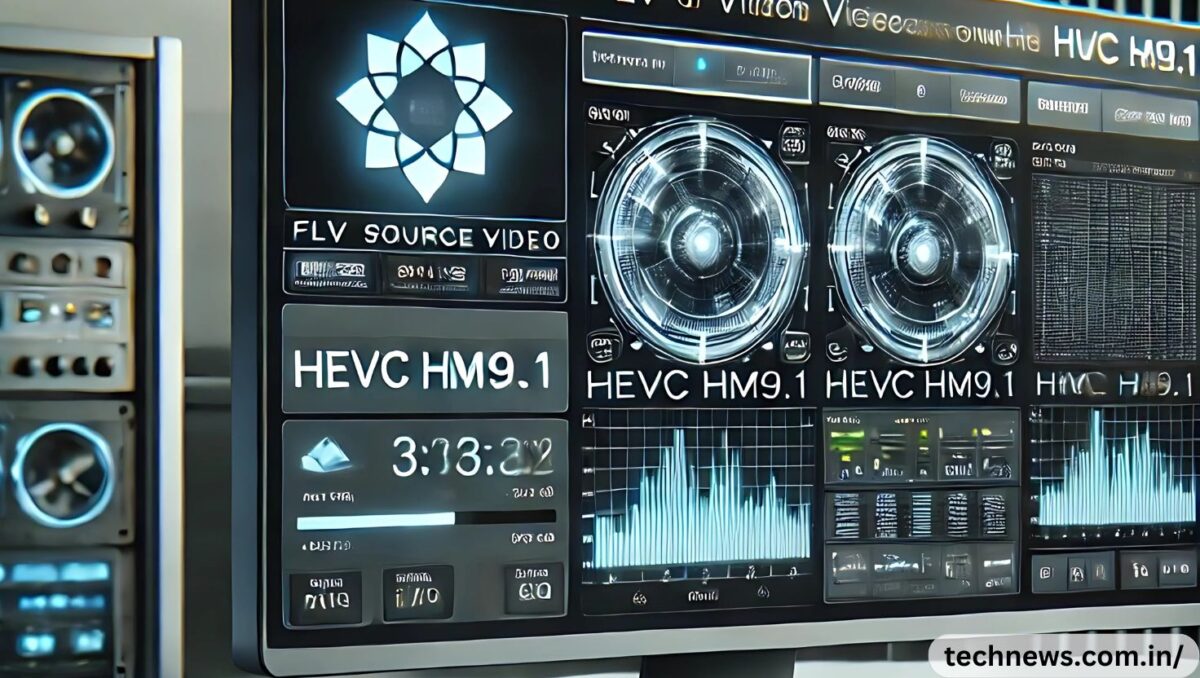Overview of HEVC
Built-in flv source::video hevc hm9.1 (High Efficiency Video Coding), also known as H.265, is a video compression standard that doubles the data compression ratio of its predecessor, H.264. It provides high-quality video at lower bitrates, making it suitable for HD and 4K video streaming.
Introduction to HM9.1
The HM (HEVC Model) series represents the reference software versions for HEVC, and built-in flv source::video hevc hm9.1 is one of the versions known for its efficient encoding capabilities. HM9.1 achieves high compression while maintaining exceptional video quality, making it a preferred choice for platforms that require high-quality video with minimal bandwidth usage.
Features of HEVC HM9.1
- Superior Compression: Built-in flv source::video hevc hm9.1 achieves high-quality compression, reducing file sizes by up to 50% compared to H.264, without compromising visual quality.
- Improved Bitrate Efficiency: It supports multiple resolutions and frame rates, with efficient bitrate management to enhance playback smoothness.
- Enhanced Error Correction: HEVC includes advanced error correction, which makes it more resilient to network issues, resulting in fewer playback interruptions.
Advantages of Combining Built-in FLV Source::Video with HEVC HM9.1
Integrating a built-in FLV source with built-in flv source::video hevc hm9.1 encoding is advantageous for applications that prioritize quality and efficiency. This combination leverages FLV’s lightweight structure while utilizing HEVC’s superior compression, providing a balanced solution for modern streaming requirements.
Benefits
- Bandwidth Efficiency
- By compressing files with built-in flv source::video hevc hm9.1, the built-in FLV source reduces data transfer requirements, resulting in smoother streaming even on limited bandwidth.
- High-Quality Video Output
- Built-in flv source::video hevc hm9.1 allows streaming in 1080p and even 4K while keeping file sizes manageable, ensuring viewers receive high-quality visuals without experiencing lag.
- Cross-Platform Compatibility
- FLV format, combined with the efficiency of HEVC, enables high-quality playback across various devices, from desktop computers to mobile phones.
- Cost-Effective Streaming
- Lower file sizes reduce storage and bandwidth costs, making it a cost-effective option for platforms that handle large volumes of video content.
- Enhanced User Experience
- Viewers enjoy a smooth playback experience, with minimal buffering and optimal video quality, contributing to improved user satisfaction.
Implementing Built-in FLV Source::Video with HEVC HM9.1
Setting Up the Environment
To utilize this combination, it’s essential to have a compatible media server and encoding software that supports both FLV and HEVC. Adobe Media Server, Wowza, and other robust platforms offer support for streaming FLV content, and they can be configured to utilize HEVC for efficient compression.
Encoding Process
- Select Encoding Software: Choose software that can encode with HEVC HM9.1, such as FFmpeg, which is open-source and widely compatible.
- Prepare the Video File: Ensure the video file is optimized for streaming, and trim any unnecessary sections to reduce file size.
- Set HEVC Parameters: Configure the encoder settings for optimal performance, including bitrate, resolution, and frame rate. HM9.1 offers flexibility, allowing for customization based on platform requirements.
- Convert to FLV: After encoding in HEVC, convert the file to an FLV format using software that supports this process.
Testing and Deployment
Once encoded and converted, test the file across different devices and platforms to ensure compatibility and smooth playback. Check for any buffering, lag, or quality issues, and adjust encoding settings as needed to achieve the best balance of quality and efficiency.
Applications of Built-in FLV Source::Video with HEVC HM9.1
Online Streaming Platforms
This setup is ideal for video streaming platforms that handle significant traffic. By combining FLV’s efficiency with HEVC’s compression, these platforms can offer high-quality streams with minimal bandwidth.
Corporate Training and E-learning
E-learning content typically involves high-quality videos, and this setup ensures smooth streaming across devices, which is crucial for accessibility in remote and low-bandwidth areas.
Mobile Video Streaming
Mobile users benefit greatly from lower file sizes without compromising on quality, and HEVC encoding with FLV source is ideal for supporting high-definition streaming on cellular networks.
Optimizing Performance with Built-in FLV Source::Video and HEVC HM9.1
Reducing Latency
To minimize latency, ensure that server configurations prioritize low-latency settings. HEVC’s compression can sometimes add encoding time, so choosing the correct balance of bitrate and frame rate is essential.
Implementing Adaptive Bitrate Streaming
Adaptive bitrate streaming allows the video quality to adjust dynamically based on the user’s network strength. This can significantly improve the playback experience, especially for mobile users.
Utilizing Content Delivery Networks (CDNs)
CDNs distribute content across various locations, enabling faster delivery to users. Combining a CDN with the efficiency of HEVC encoding and FLV format can lead to optimal performance.
Conclusion
The combination of a built-in FLV source::video with HEVC HM9.1 encoding provides an optimal balance of high-quality video output and bandwidth efficiency. This setup is particularly valuable for online streaming platforms, mobile applications, and any system where reliable, high-quality video delivery is essential. By leveraging the strengths of both formats, this solution meets the demands of modern streaming applications, delivering smooth, high-resolution video with minimal buffering.
If you want to read more information about how to boost traffic on your Website just visit –> The
